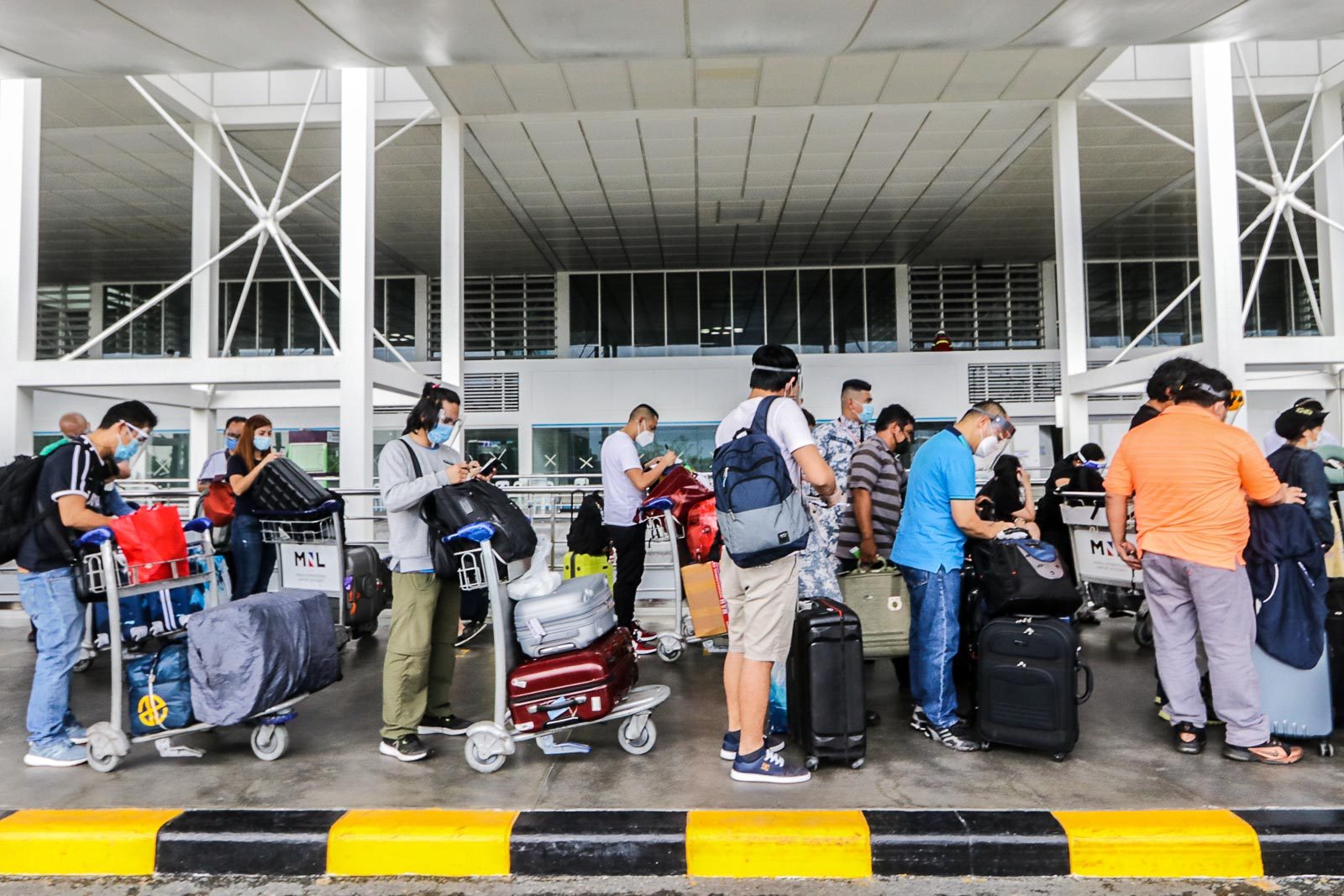SUMMARY
This is AI generated summarization, which may have errors. For context, always refer to the full article.


The Department of Health (DOH) confirmed late Wednesday night, January 6, that the 30-year-old Hong Kong passenger who contracted the new variant of COVID-19 is an overseas Filipino worker (OFW) from Cagayan Valley.
Citing a report from the Hong Kong International Health Regulations National Focal Point and the Philippines’ Centers for Health Development, the DOH said that the OFW arrived in Hong Kong on December 22 with a negative result for COVID-19.
“On January 2, 2021, she underwent RT-PCR testing again where the swabs tested positive and detected to also be positive for the UK variant,” the DOH said.
Below is the timeline of events:
- December 17: She left Cagayan Valley Region.
- December 18: She arrived in Metro Manila and underwent quarantine as per workplace protocol.
- December 19: She got tested for COVID-19 as a requirement in her workplace. She tested negative.
- December 22: She left for Hong Kong and underwent quarantine upon arrival.
- January 2: She underwent RT-PCR testing again where the swabs tested positive and detected to also be positive for the UK variant.
The DOH did not specify the occupation of the OFW in Hong Kong.
“She remains in isolation and in stable condition,” the DOH said.
In a virtual press briefing on Tuesday, January 5, Hong Kong health officials said they detected 4 cases of the new variant in their country. Among the cases was a 30-year-old female Hong Kong resident, who returned from Manila on December 22 via PR 300. She was tagged case 9003.
Two other cases were from London, while the fourth case was from France.
While Hong Kong authorities did not provide further details about the Filipino case, local newspaper there reported that the patient is a domestic worker.
Contract tracing underway
The DOH said that the contact tracing of passengers in Philippine Airlines flight 300 is underway.
Health Undersecretary Maria Rosario Vergeire early Wednesday told reporters there were a total of 40 passengers on that flight. (READ: DOH still can’t tell where, how Hong Kong passenger got UK COVID-19 variant)
The DOH said there is an ongoing contact tracing by the concerned epidemiology and surveillance units in Cagayan Valley and Metro Manila.
“They have been instructed to ensure strict quarantine of identified close contacts and for samples collected from said contacts to be sent for confirmatory testing and, if samples test positive, subsequent whole genome sequencing,” it said.
Is there a case of the new variant in PH?
Despite the reported Filipino case in Hong Kong, the DOH maintained on Wednesday that the new variant of COVID-19 has not reached Philippine shores yet.
This was after the results of the genome sequencing done by the Philippine Genome Center that came out Wednesday morning showed that none of the 305 samples it tested had the new variant.
The latest DOH report also did not confirm whether or not there are cases of the new variant in the country.
In a virtual press briefing on Wednesday, Edsel Salvana of the health advisory technical working group explained that if the case got a negative result on December 22, it would take 3 to 5 days before she could test positive again.
“And if she got tested on December 27, it is more likely that she contracted the virus in Hong Kong,” she said.
But even the polymerase chain reaction (RT-PCR) test, which is considered the gold standard for COVID-19 testing, could still yield false negative results.
The new COVID-19 variant known as B117 was first detected in the United Kingdom in September.
While there is no indication yet that suggested that B117 is more deadly, scientists have said that it leads to an increased viral load inside a person’s respiratory tract, so it spreads more easily when people talk or cough.
The detection of the new variant has pushed countries, including the Philippines, to tighten borders anew as a precautionary measure. (READ: LIST: Countries facing Philippine travel ban due to new COVID-19 variant)
The pandemic has so far infected over 86 million people globally. In the Philippines, a total of 480,737 have been infected with the deadly virus as of Wednesday. Of the total, 9,347 have died, while 448,700 have recovered. – Rappler.com
Add a comment
How does this make you feel?

There are no comments yet. Add your comment to start the conversation.